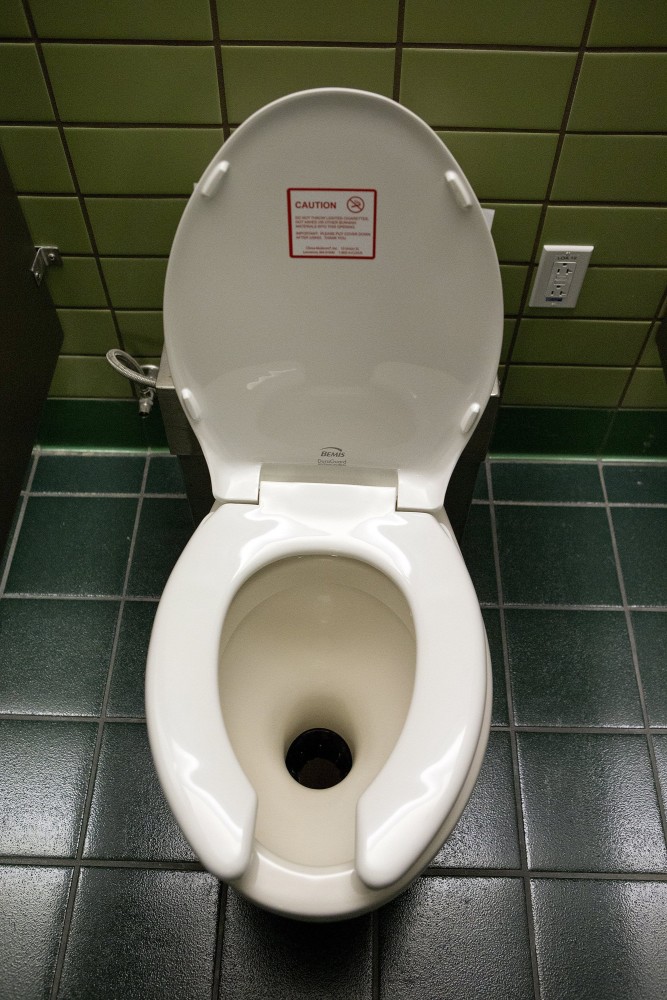By Danny Westneat
The Seattle Times
A couple decades ago when I first started covering politics, there was a little issue that served as a big metaphor for changes going on in the country. It was the matter of “potty parity.”
Or as I liked to call it: “porcelain proportionality.”
Easy for me to joke, I know. As a man, I haven’t had to squander a depressing fraction of my life tap-dancing in restroom lines. Potty parity was the drive to force builders, who were and are predominantly male, to devote a bigger share of toilets in office towers and public buildings to women.
We passed a law in the early 1990s. The flash point was the torturous lack of women’s stalls at the old Kingdome. “Women Can Rejoice! Potty Parity’s Here,” was the headline of a 1992 Jean Godden column.
The rules weren’t perfect but they recognized, in the bedrock of the building codes, that our society had seismically changed. And wasn’t going back.
Except nobody foresaw the rise of the brogrammer.
Last week the local tech blog GeekWire had a new and surprising twist on the commode inequality story, one that sums up how Seattle culture is morphing yet again.
Prompted by that big New York Times expose about how Amazon employees are so overworked they’re weeping at their desks, GeekWire smartly requested all the state Labor and Industries complaints about conditions at the company.
It turns out the top complaint isn’t overwork. In the Amazon jungle, it’s survival of the fittest to go to the bathroom. And the cause is: potty-parity reverse discrimination!
“Due to a typical gender imbalance of our employees, we typically have long lines for using restroom stalls in most of the South Lake Union Amazon offices,” a male Amazonian wrote in a complaint filed with the state, according to GeekWire.
“There are 150 males on the 8th floor with 2 urinals and 2 stalls,” reads another complaint. “Even if I were to go to another floor, the situation is the same.”
The blog noted the state came out to investigate (seriously, state?) It did not cite Amazon because the offices had enough total toilets.
But on one floor, there were 60 male employees and only three females. So each woman effectively had her own personal toilet stall. While the men apparently were roaming about like cats without a litter box.
In one building, there were 558 male workers, and 105 female. According to potty parity, however, each gender gets roughly the same number of toilets.
Some buildings are so out of toilet whack that one former Amazonian developed a call-of-nature strategy in which he would first reconnoiter the office floors inhabited by rare groups of women. “Amazon Apparel, Amazon Mom, Amazon Baby — these were the places where you had a better shot of getting a free stall in the men’s room,” he wrote.
The reaction to GeekWire’s report has also been a sign of the times. Amazon could just switch to mixed-gender bathrooms, some said. Or here’s a radical fix: hire more women.
“I just love this because I am a woman who has waited in bathroom lines on many occasions,” one gloater wrote. “It’s great that gender inequity has this side benefit.”
I asked the guy who wrote our state’s potty parity law — yes, it was a guy, former state Sen. Ken Jacobsen of Seattle — for his take on all this.
“Who would have thunk it?” said Jacobsen, 70, laughing. “We were working on the assumption back then that of course there’d be more and more women coming into the workplace.
“This is like a ricochet backward in time. I guess I never imagined that in 2015 we would still have offices here with 60 men and only three women.”
Well, Amazon’s motto is “Work Hard. Have Fun. Make History.” They don’t say what kind of history.














































































































































































































































































































































































